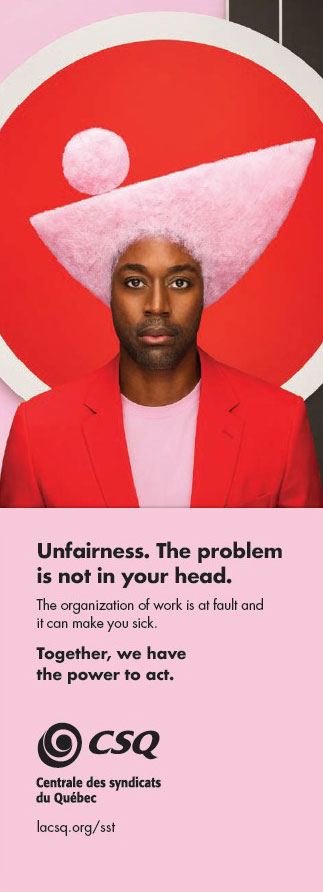Employer of choice,” “healthy company,” “best employer”... there are many labels aiming to highlight that it’s great to work for one company or another. Those different recognition programs relate to a desire to define a company’s own unique management culture.
What is organizational culture?
Like an individual’s personality, organizational culture is unique. It manifests itself in the organization’s policies, from the dress code to working hours, to work methods and problem solving ways. It also governs aspects like the structure of power, workspace design, employee benefits, etc.
The executives are usually the ones who establish the organizational culture, but it is rarely explicitly defined. Rather, it emerges from people’s beliefs, ways of thinking, words and actions. It shapes what are acceptable and unacceptable behaviours. It can help define the values and fundamental principles which guide, among other things, management practices.

Values and their impact
“Organizational culture has an indirect impact on workers’ mental health,” explains Julie Dextras-Gauthier1. “It influences the work organization’s conditions, like the use of skills, decision-making authority, work demands, social support at work, and rewards.” It’s these work conditions that have harmful or beneficial effects on mental health.
According to the researcher, in a company that values human relations, interactions and social support, “the risks of psychological distress, emotional exhaustion and cynicism diminish, while the feeling of professional efficiency increases.”
The same can be said for an organization relying on flexibility, versatility and communication between staff members. They suffer less emotional exhaustion, show less cynicism and experience a greater sense of usefulness.
By contrast, a company focusing on results, productivity, performance and reaching organizational and individual goals is linked to more distress, exhaustion and cynicism, based on the researcher’s observations.
Beyond cosmetic measures, like stress management or nutrition workshops, workload, especially overload, psychological demands that work entails and job insecurity need to be tackled.
– Julie Dextras-Gauthier
What about public services?
At first glance, one could think the organizational culture of public services promotes values like stability, continuity and a sense of job security. Yet, according to Julie Dextras-Gauthier, it instead leans towards a rational culture, which values things like productivity, performance and achievement.
Management by results and the lean2 approaches, focused on productivity and accountability, in some cases put pressure on the managers’ shoulders, who then, in turn, put pressure on those of the employees. “That could explain, in part, the high absenteeism rate in education and health sectors,” she claims.

Risk factors
What are described by the researcher as working conditions are considered more like risk factors in a public health approach.
Those factors, which include work overload, lack of autonomy, injustice, violence, psychological harassment, lack of support and job insecurity, are linked to working conditions, social relations, management practices and work organization, reminds the INSPQ3 on its website. Those factors increase the probability of creating adverse effects on the physical and psychological health of workers.
To create and maintain a psychologically sound and secure work environment, organizations need to put certain values forward, such as “trust from management, justice and respect which include fair settlement of conflicts and equitable sharing of duties, recognition which translates to appreciation and a fair treatment, as well as esteem and respect in social relations,” reports Dr. Michel Vézina4.
Because he feels values in themselves are hard to identify and measure, Michel Vézina prefers to talk about basic human needs and about how the work environment can meet them or not.
At the root of those needs is physical health and safety. At the top level are the awareness of one’s own value, self-esteem and social justice, trust in one’s own abilities, self-fulfillment and autonomy, as well as a sense of belonging. “Those needs have to be taken into account in the company’s and management’ decisions,” he adds.
To create and maintain a psychologically sound and secure work environment, basic needs have to be taken into account in the company’s and management’ decisions.
– Dr Michel Vézina
 For a psychosocial safety climate
For a psychosocial safety climate
The management and human resources management approach as well as the one more focused on mental health could be combined by aiming for the development and the maintenance of a psychosocial safety climate, an idea developed in Australia.
This concept refers to an organizational climate beneficial to the staff’s psychological health and safety. To achieve it, four conditions must be met:
- Management must commit to promoting psychological health at work and get involved.
- Management must consider staff’s psychological health to be just as important as productivity.
- The organization must value communication and take staff’s concerns into consideration.
- There must be a real participation and involvement in the organization through consultations with unions and representatives in occupational health and safety.
Prevention is better than cure
Julie Dextras-Gauthier and Michel Vézina agree on the necessity to prevent. “Beyond cosmetic measures, like stress management or nutrition workshops, workload, especially overload, psychological demands that work entails and job insecurity need to be tackled,” states Julie Dextras-Gauthier. “This implies a reflection on work conditions, especially in a labour shortage situation, where attractive conditions need to be offered.”
To support managers, Michel Vézina already suggested the idea of creating Organization Assistance Programs (OAPs). “Unlike EAPs5, which focus on the individuals, OAPs aim to offer managers and work teams access to specialized resources to help them identify the different factors behind the mental health problems they face and create an adapted action plan,” he explains.
What about collective action?
According to Julie Dextras-Gauthier, an organization’s culture can change when a feedback loop between staff members and managers is put in place: “Even though it remains to be verified, I believe this loop influences a company’s culture.”
Collective action also contributes to the strengthening of social support from co-workers. “It’s obvious that talking with colleagues or with the union allows to take measure of the situation and to search for the best solutions as a group. It’s actually what is being highlighted by your Centrale’s campaign on psychosocial risks at work,” she concludes.
1 Julie Dextras-Gauthier is assistant professor in the Department of Management of the Faculty of Business Administration, at Université Laval.
2 Approaches based on eliminating losses that result from wasted efforts and resources associated with activities without added value.
3 Institut national de santé publique du Québec.
4 Michel Vézina is medical advisor in the Scientific Unit of Occupational Health at the INSPQ.
5 Employee Assistance Programs.
